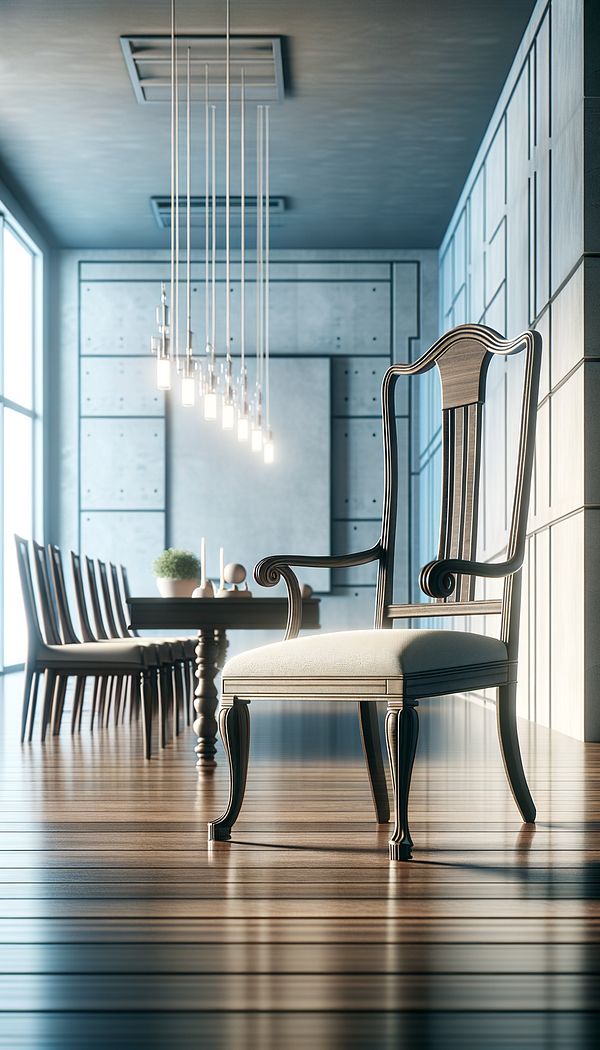What is a Carver Chair?
A Carver Chair is a type of dining or armchair originating from the American colonies.
Description
A Carver Chair, recognizable for its straightforward yet elegant design, is a dining or armchair that first came into prominence in the American colonies. Named after John Carver, the first governor of Plymouth Colony and purportedly its initial user, this chair epitomizes the blend of functionality and modest aesthetic appeal. Distinct for its broad, usually rush or wooden seat, and its tall, often slightly reclined backrest, the Carver Chair usually features armrests, distinguishing it from other colonial chair designs.
The design simplicity of the Carver Chair is a hallmark of early American furniture, where practicality often trumped ornate detailing. However, despite its straightforward design, variations do exist. Some versions incorporate spindle, turned, or ladder back designs in the backrest, with legs and arm supports often showcasing subtle turnings or straight lines. These elements, combined with the chair’s historical relevance, contribute to its lasting popularity in interior design, especially within spaces aiming for a colonial, rustic, or traditional aesthetic.
Today, Carver Chairs are cherished not only for their historical significance but also for their versatility in use and design adaptability. They fit seamlessly into a variety of interior styles, from traditional to more contemporary settings, thanks to modern interpretations that respect the original design while incorporating new materials and finishes.
Usage
The simplicity and historical charm of the Carver Chair make it a popular choice for adding a touch of classical elegance to dining rooms, studies, and traditional kitchens. In modern homes, it can act as a statement piece that bridges the gap between contemporary and traditional décor. Furthermore, Carver Chairs are often used in restoration projects or in settings that aim to capture the essence of early American life, such as museums and historical reproductions.
FAQs
-
What is the key feature that distinguishes a Carver Chair?
The key feature of a Carver Chair is its armrests, which distinguish it from other colonial chairs that typically lack this component.
-
Can Carver Chairs fit into modern interior designs?
Yes, Carver Chairs can seamlessly integrate into modern interior designs, thanks to their simple yet elegant lines and the availability of modern versions that adapt the original design to contemporary tastes.
-
How are contemporary Carver Chairs different from their historical counterparts?
Contemporary Carver Chairs may differ from their historical counterparts in materials and finishes, incorporating more diverse and sometimes more durable materials, while retaining the signature design elements of the original chairs.
-
Are Carver Chairs comfortable?
Carver Chairs are considered comfortable, especially models that feature a rush or padded seat, designed to enhance comfort without compromising their aesthetic appeal.
-
How do I identify an authentic Carver Chair?
Authentic Carver Chairs from the colonial period are often identified by their craftsmanship, materials, and design details typical of the era, such as rush seats, ladder-backs, or turned legs and arm supports.
Practical Application
When incorporating a Carver Chair into your interior design, consider its historical context and design simplicity to enhance its impact. Pairing it with complementary pieces, such as a traditional wooden table or rustic decor items, can amplify its aesthetic appeal. For a modern twist, juxtapose the Carver Chair with contemporary elements or use it as an accent piece in a minimalist setting. Regular maintenance, including dusting and careful cleaning of any rush seating, will preserve its beauty and functionality for years to come.
-
Furniture Types599 articles
-
Historical Periods & Movements150 articles
-
Decorating Principles & Elements330 articles
-
Spool BeadA decorative small wooden molding featuring a series of round beads.
-
Break FrontA break front is a piece of furniture with a central section that protrudes beyond the sections flanking it.
-
AubussonAubusson refers to a specific type of French flat-woven tapestry or carpet.
-
Center GlideCenter Glide refers to a mechanism used in furniture design, especially in drawers, that allows for smooth opening and closing.
-
BobecheA decorative element that surrounds the base of a candle or candelabra to catch wax drippings.
